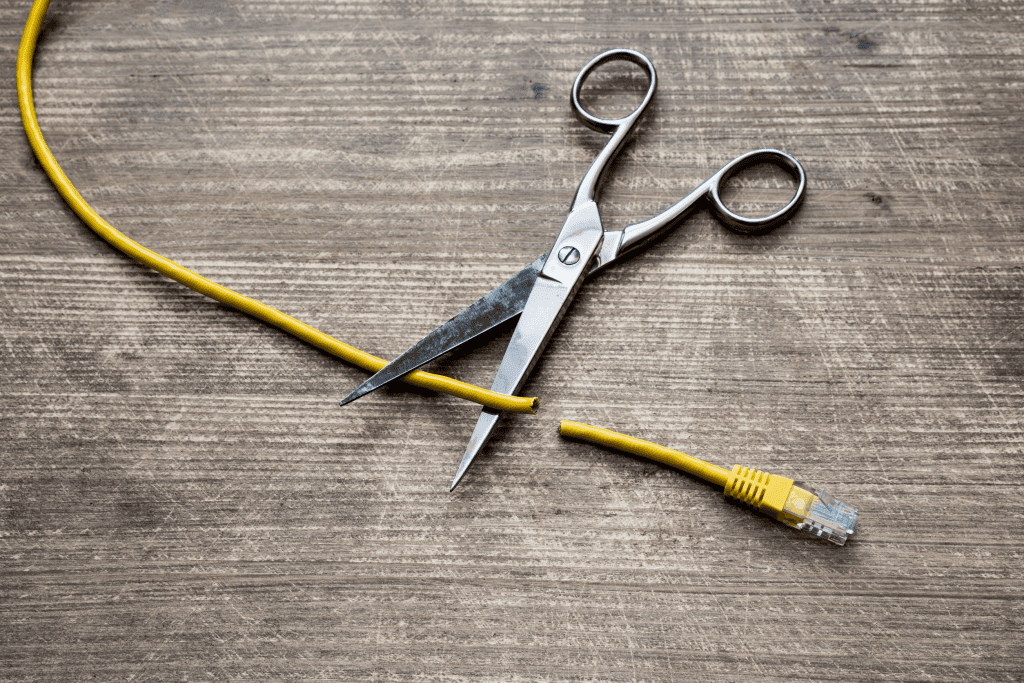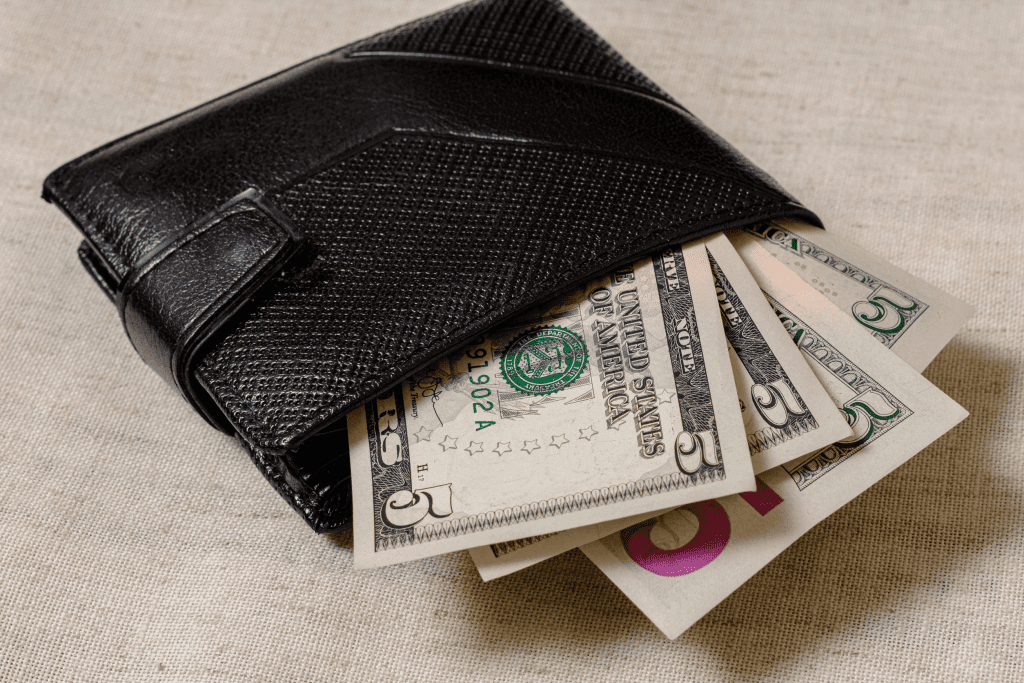
Saving money doesn’t have to feel impossible. Whether you make a little money or a lot, there are creative ways to save money that won’t make you feel like you’re sacrificing.
Why is saving so important?
Saving helps you in the future. You never know what may happen and when you’ll need funds set aside. Whether you have specific financial goals you want to reach or you just want to know you have money set aside for emergencies, it’s easy to save with these 17 tips.
1. Automate your savings

If you’re like most people, you save after you spend. What if you flipped this around? Instead of saving after you spend, save, then spend. When you wait until the end of the month to save, you may not have anything to put away. Even if you have a low income or are a single mom, there are ways to save.
Instead, create a budget and allocate a specific amount of your income for saving. Then set up either a direct deposit with your employer or an automatic transfer with your bank in the amount you decided is right.
This way you’ll always save and won’t have to think about it or realize that you spent what you should have saved.
2. Clip coupons

Clipping coupons doesn’t mean you have to spend hours reading the Sunday paper and clipping coupons. Today, you can do it online and with a quick web search. Sites like Koopy make it easy to find coupons for hundreds of stores.
You can also join each store’s loyalty program. You’ll often receive exclusive offers and deals or be able to accumulate points that convert a coupon when you reach a specific threshold or on an ongoing basis. For example, if you join the Target Circle program, you earn 1% of your purchase back just for scanning your barcode or entering your phone number each time.
3. Plan meals

Use the week’s store circulars or your favorite store’s app to plan your meals. Choose meals you can buy the main ingredients on sale or use coupons to lower your grocery bill. In addition, try shopping only the perimeter of the store. Don’t get sucked into impulse purchases in the inner aisles.
If you need to go into the inner aisles, have a list and don’t veer from it. Buy the items you need and get out.
4. Use cash envelopes

If you avoid credit or debit cards, keep your cash in envelopes with an allotted amount in each. Without budgeted envelopes, it’s easy to overspend or not realize where you spent your cash.
When you have a specific amount budgeted and know when you use it up, you can’t spend in that category anymore, you’ll be more selective about the money you spend and the purchases you make.
5. Cancel cable

Today you can get your favorite channels for a lot less than the cost of cable. Cut the cord on cable and replace it with a much cheaper streaming service. You could even buy the individual apps for the channels you watch most. If you’re looking for network TV, Peacock TV offers free streaming and shows most of the all-time favorite shows.
6. Save all of your $5 bills

Every time you pay in cash and receive a $5 bill back, save it. Keep an envelope or jar for your $5 bills. It’s amazing how fast the money can add up and you only stocked away $5 at a time. Chances are you won’t even miss the $5, but when you have a few thousand dollars saved up at the end of the year, you’ll be pretty happy.
7. Shop for holiday gifts year-round
Don’t save your Christmas shopping for December. Instead, break up your list throughout the year. This way you’ll spread out the spending and you can take advantage of sales throughout the year. Whether you shop online on sites like Amazon getting great lightning deals or you shop in-store, you’ll feel less financially pinched in December when you have to drop a large wad of cash on gifts.
8. Cancel unwanted subscriptions

Check your credit card statements and see what subscriptions you’re paying for that you may not need. Sometimes we sign up for ‘free’ subscriptions only to forget to cancel them. Before you know it, you’ve paid for a subscription for months but never used it.
If you aren’t sure where you’ve signed up and don’t have time to check, use an app like Trim to find them for you. Trim searches your account activity and alerts you of any subscriptions you’re paying. If you want to cancel them, Trim will do it for you.
9. Implement the 30-day rule

If you’re an impulse shopper, implement the 30-day rule. When you see something you want that wasn’t on your list, give yourself 30 days rather than buying it on the spot. Write down what the item is and the date you saw it. After 30 days, ask yourself if you still want it or if it was an impulse buy.
If you want it, figure out how to fit it into your budget without using your credit card or causing financial strain. Chances are though, you’ll have moved on and maybe even have seen another impulse buy you wanted.
10. Use the library

If you’re an avid reader and buy your books, consider using the library instead. The library is free and usually has all of the latest releases, plus older editions of your favorite books. You can even rent movies, magazines, and other materials to save even more money on your entertainment.
11. Sell unwanted items from your closet

Make a rule with yourself that before you buy anything new (or immediately after), you get rid of three things for the one item you bought. If you have barely worn clothing or items that are high value, you may be able to sell them on sites like eBay or Facebook Marketplace and make a little cash to make up for the money you spent.
12. Use cashback credit cards

If you can trust yourself to only spend what you can pay for in full, use rewards credit cards. You may earn between 1% – 5% back on your purchases, which can add up especially when you use the credit cards for your everyday spending. If you spend $2,000 a month or $24,000 a year, that’s $2,400 – $6,000 in cashback!
13. Use YouTube to Workout

Ditch the expensive gym membership and search for your favorite workouts on YouTube. There are millions of free options that allow you to work out without paying the expensive gym fee. If you like equipment, invest in one piece of equipment for your home and improvise in other areas. For example, instead of a treadmill, walk or run around your neighborhood. If you love the stationary bike, ride your bike around the local forest preserve.
14. Cut back on internet and phone costs

You may need internet and a phone plan, but you don’t need unlimited data on either. Compare your options and see how much money you can save by cutting back on your plans. You may find that you’re paying for unlimited data unnecessarily. Check your usage over the last few months and see how much you’d save by cutting back on your plans.
15. Get your nails or hair done at a local beauty school

If you love getting your hair and nails done, consider going to the local beauty school. You’ll pay a fraction of the regular price at other salons and still get a great service. Most schools have teachers overseeing the services so nothing goes wrong. Not only will you save money, but you’ll help aspiring technicians get the hours they need to graduate.
16. Shop for cheaper insurance

If you haven’t shopped for a cheaper home, car, or even health insurance lately, you may be paying too much. Insurance companies normally increase rates each year and if you don’t shop around, you could get caught in an increasing cycle of higher premiums.
Set a date on your calendar to shop around for insurance at the same time each year so that you’re always getting the best rates before your current policy automatically renews.
17. Buy generic products

Most generic products are name-brand products with different labels. If you shop at stores like Aldi, you’ll likely notice that most of the products are exactly the same. Not paying for the expensive labels can save you hundreds or even thousands of dollars a year on groceries and household items. Try a few things at a time and see what your family does and doesn’t like. Some things will be great, but there may be a few products your family prefers the real deal.
FAQs on Creative Ways to Save Money
How can I save if I don’t make a lot of money?
You don’t have to make a lot of money to save money. It all comes down to creating the right budget and sticking to it. Make savings a part of your budget and automate the savings so you don’t have excuses or forget to save.
How can I save money in a week?
With a few simple changes, you can save money in a week. Only buy sale items at the grocery store, limit your ‘needless spending,’ bring your lunch to work instead of eating out, and make your coffee at home. Just with these changes, you could save up to $100 in a week.
How much should I save each month?
Ideally, you should save 20% of your paycheck each month. If that’s too much for you, start with a percentage you can handle, but work your way up to 20% as fast as you can. This will allow you to save for emergencies, financial goals, and retirement all at once.
Final Thoughts – Creative Ways to Save Money
Saving money isn’t as hard as it seems. It just requires a little thinking outside the box and some consistency. Try the tips we shared and see what you think. We’d also love to hear the creative ways you save money! Let us know below!
